August 25, 2025 | 08:29 GMT +7
August 25, 2025 | 08:29 GMT +7
Hotline: 0913.378.918
August 25, 2025 | 08:29 GMT +7
Hotline: 0913.378.918
The National Agricultural Extension Center (Ministry of Agriculture and Rural Development), in collaboration with Quang Ngai province's Department of Agriculture and Rural Development, organized the Agricultural Extension @ Agriculture Forum on May 23 with the theme: "Agricultural Mechanization in in the South Central - Central Highlands Region."
The agricultural mechanization initiative in Vietnam, particularly in the South Central - Central Highlands region, has seen remarkable progress in recent years. Accordingly, mechanization is being widely applied in the production and processing of agriculture, forestry, and fishery products. Furthermore, agricultural mechanization has contributed to reallocating labor, reducing production costs, and increasing productivity, quality, and added value of agricultural products. Consequently, the initiative has assisted in the restructuring of the agricultural sector towards efficiency and sustainability.

Provinces and cities within the South Central and Central Highlands regions have actively promoted the agricultural mechanization initiative. Photo: L.K.
Quang Ngai province, as an early adopter of policies to promote agricultural mechanization, aims to accelerate the economic restructuring process, and reallocate labor in rural areas. Accordingly, the province implemented land consolidation, and established 287 large fields spanning nearly 5,000 hectares, dedicated to the production various crops such as rice, peanuts, and watermelons.
These models have incorporated technical advancements and mechanization into the production process. However, Quang Ngai's rate of mechanization in rice production is relatively low compared to other regions nationwide, with limited effectiveness and inconsistent rate of mechanization across different areas within the province.
According to Ho Trong Phuong, General Director of Quang Ngai province's Department of Agriculture and Rural Development, the low rate of mechanization can be primarily attributed to the fragmented and small-scale agricultural production areas within the province. As a result, the agricultural mechanization initiative faces significant challenges across different stages of production, including soil preparation, crop care, and harvesting. Consequently, post-harvest losses are relatively high.
"Our mountainous regions are characterized by the prevalence of terraced fields, which challenges the feasibility of agricultural mechanization. The current connection between various stages of crop care, processing, preservation, and harvesting are not fully developed, further inhibiting the comprehensive agricultural mechanization initiative," noted General Director Phuong.
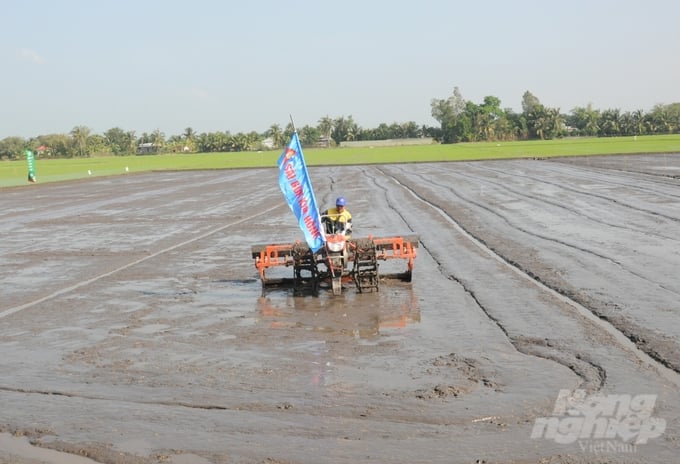
The rate of agricultural mechanization is inconsistent across different stages of production. Photo: TL.
In addition to Quang Ngai, other provinces and cities within the South Central and Central Highlands regions have prioritized investment and the integration of machinery into agricultural production, resulting in significant positive results. By the end of 2023, there has been a notable increase in the number of motorized machines utilized across all stages of production in the key agricultural sectors of the South Central Coast and Central Highlands regions. Notably, the total figures comprise upwards of 60,400 tractors, 4,600 combine harvesters, 8,600 seeders for various food crops, and 344,000 motorized pesticide sprayers.
According to Nguyen Doan Hung, an officer from the Agricultural Extension and Crop Production Office under of the National Agricultural Extension Center, current comprehensive agricultural mechanization models aim to cut costs, minimize losses, reduce emissions, and optimize labor efficiency. They also focus on improving the efficiency of input materials, creating large-scale and flexible products in association with production unit codes, traceability, and quality certification.
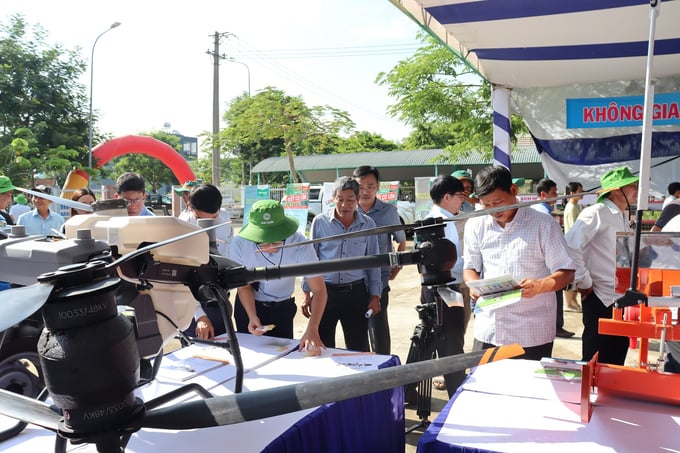
Forum participants visiting various mechanized equipment used in rice production. Photo: L.K.
The National Agricultural Extension Center has initiated over 30 projects in agricultural mechanization, preservation, and processing since 2013, featuring more than 50 demonstration models and nearly 10,000 participating households. Some notable models include comprehensive mechanization in large-field rice production; combine harvester application; rice drying kiln with a capacity of 30 to 50 tons per batch; tray nursery - seeding machine combination model; and water-saving irrigation system.
"The tray nursery - seeding machine combination model has increased labor productivity by five to seven times, while reducing costs associated with seeding, fertilizers, and pesticides. Additionally, the model increased rice yields by 500 to 700 kilograms per hectare compared to that of traditional farming practices, increasing economic efficiency by 15 to 20%. Agricultural extension projects have facilitated the establishment of mechanization service clusters in rice production, with the goal of promoting comprehensive mechanization services across all stages of the production process," Mr. Hung reported.
Despite these achievements, the rate of agricultural mechanization in Vietnam, particularly in the South Central Coast and Central Highlands regions, face considerable challenges. The majority of farming households operate on small landholdings, limiting the effectiveness of machinery investment and utilization. On the other hand, the infrastructure required to support the mechanization initiative suffers from a lack of comprehensive development.
Ho Phi Tuan, Deputy Head of the Agricultural and Rural Engineering Office under the Department of Cooperatives and Rural Development, Ministry of Agriculture and Rural Development, reported that current local budgets for supporting mechanization development is limited. The high cost of machinery and equipment, coupled with low agricultural production income, poses as significant barriers. Deputy Head Tuan also noted there is a lack of professional mechanization service providers, particularly in specialized farming areas.
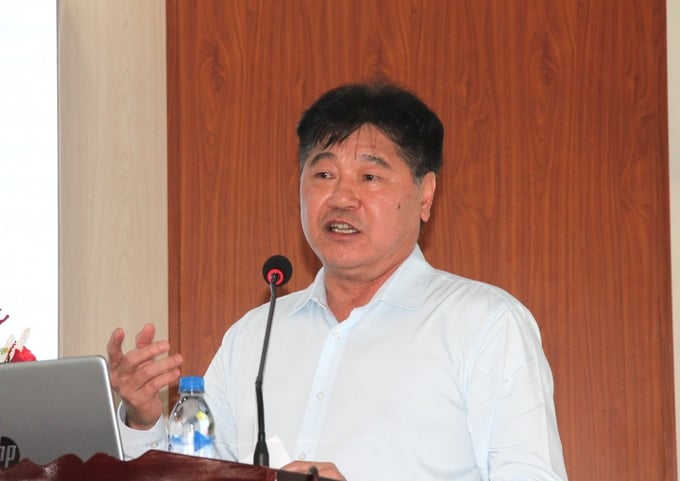
Le Quoc Thanh, Director of the National Agricultural Extension Center, emphasized the importance of a mechanization market in the comprehensive development of agricultural mechanization. Photo: L.K.
In response to these challenges, Ho Phi Tuan proposed that local governments develop agricultural infrastructure to support the integration of mechanization into production. On the other hand, it is crucial to enhance research, application, and transfer of scientific and technological advancements, and to develop a manufacturing industry and market for agricultural machinery, equipment, technology, and processed agricultural products.
"Additionally, it is essential to promote the use of machinery and equipment in all stages of the production process; conduct training and improve the quality of the workforce to meet labor market demands; establish an information system and mechanization database; and continuously innovate and improve mechanisms and policies for land consolidation. Another solution is to strengthen international cooperation activities, with the aim of exchanging experiences and implementing development cooperation projects in agricultural mechanization," Deputy Head Tuan suggested.
Director of the National Agricultural Extension Center Le Quoc Thanh emphasized the importance of agricultural mechanization in promoting the shift from a production-centric mindset to an economy-centric mindset; reducing costs and labor; increasing productivity and product quality; and minimizing emissions and environmental damage. The South Central Coast and Central Highlands regions currently exhibit a low rate of mechanization in rice production and agricultural activities as a whole.
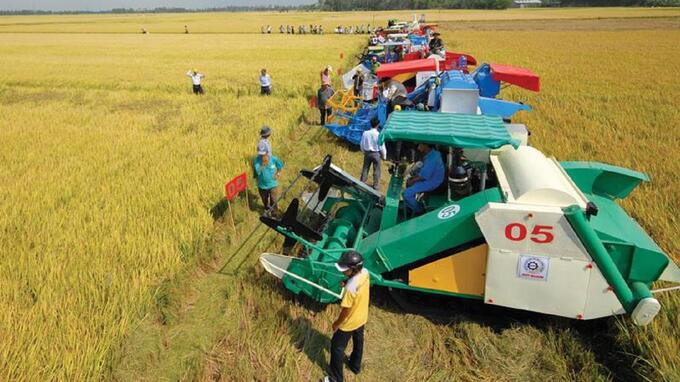
The progress of agricultural mechanization is inconsistent across different regions nationwide. Photo: LHV.
"We currently possess the advantages of policies, technological solutions, and the readiness of both businesses and farmers; however, the key issue lies in organizing production," Mr. Thanh remarked. "Mechanization should not be an individual effort by farmers. Instead, we need to establish a mechanization market, such as cooperative groups or large-field production cooperatives."
"We need a service model to bridge the gap between suppliers and users, accompanied by suitable, detailed policies for different regions, and reinforced infrastructure. As a result, the comprehensive involvement of the political system is crucial to creating a unified mechanization market, and promoting a change in the farmers' mindset," Mr. Thanh emphasized.
Translated by Nguyen Hai Long

(VAN) Pu Mat fulfills its mission: regulating the climate, preserving water sources, nurturing culture, extending its arms to shelter people.
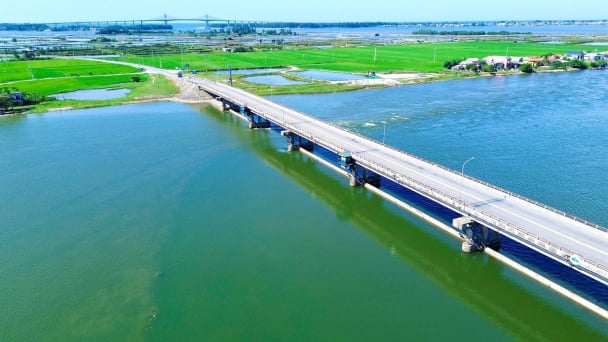
(VAN) After 20-year operation, Thao Long Dam (Hue city) has seriously deteriorated. Urgent repairs and upgrades are required to ensure the safety.
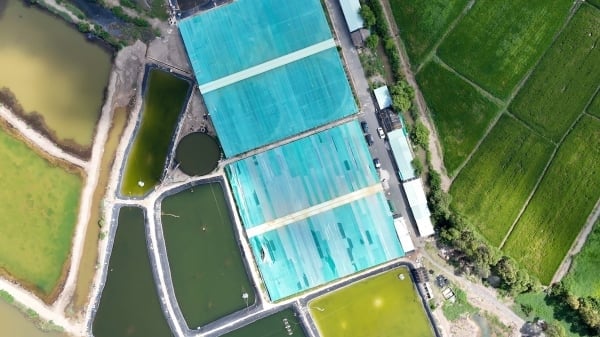
(VAN) Raising shrimp in membrane houses helps stabilize the farming environment, limiting sudden fluctuations that stimulate the development of pathogens.
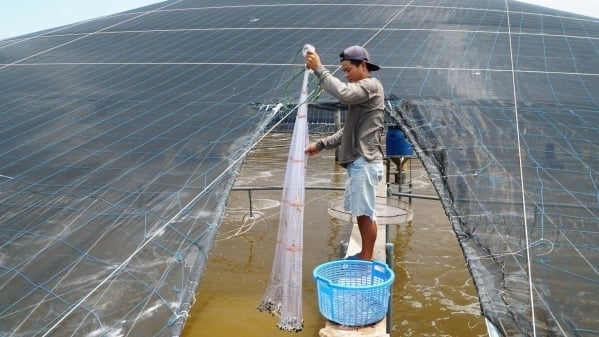
(VAN) The rainy season is accompanied by erratic daily temperatures and significant fluctuations in the water and pond environment, resulting in damage to aquaculture farmers.
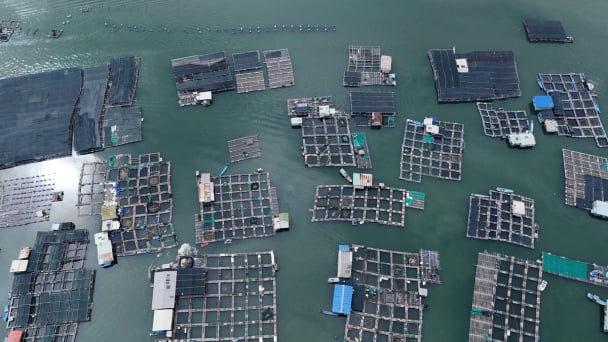
(VAN) Applying disease prevention and control measures, from cage management, breed selection, to environmental monitoring, will help people minimize damage and develop sustainably.

The ecosystems of the Ly Son Marine Protected Area are at severe risk due to the increasing pressure from a variety of impacts. Therefore, conservation efforts have emerged as a priority.
/2025/08/16/1215-1-000239_130.jpg)
(VAN) Nestlé Vietnam has recently organized a training program on occupational safety and hygiene in waste collection and recycling for businesses in the recycling sector.